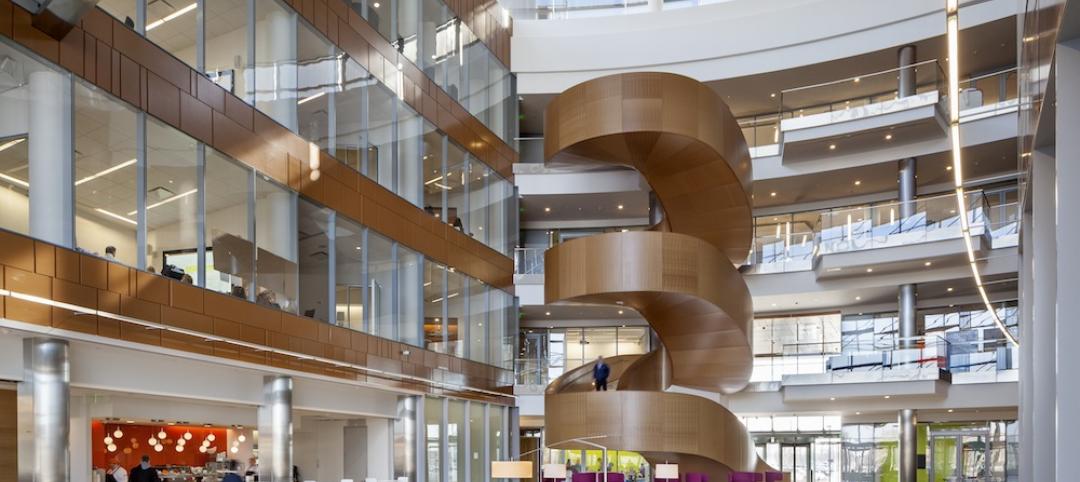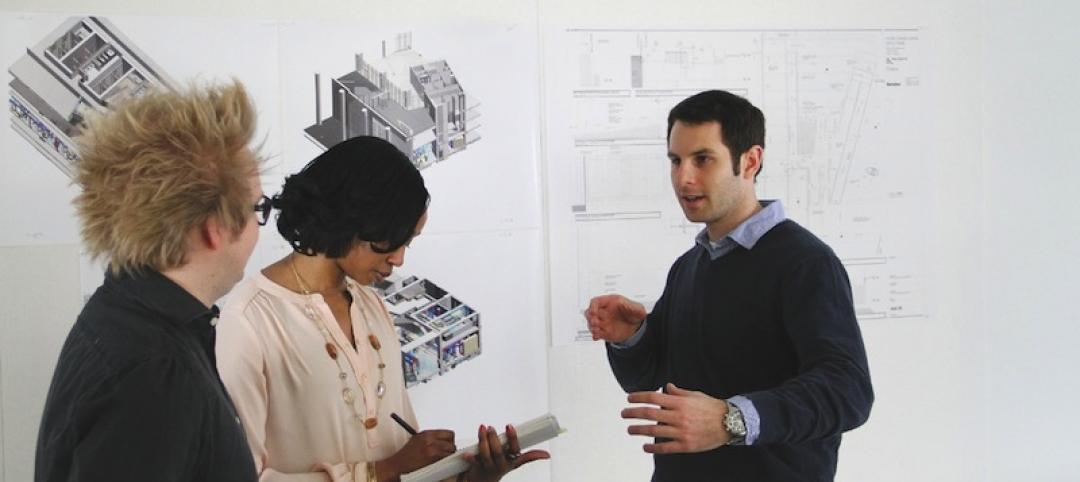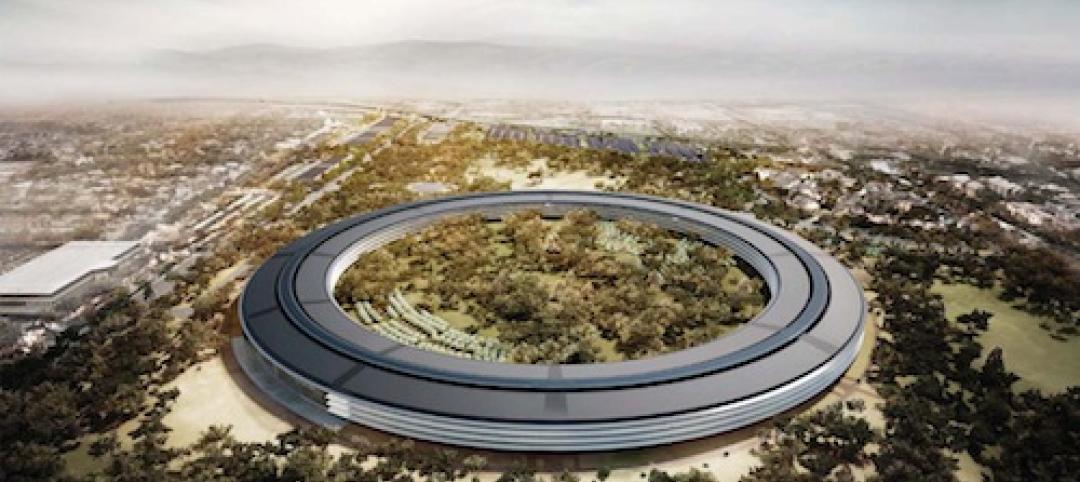Washington Fruit & Produce Company’s new headquarters building appears to have taken a few design cues from Frodo and Bilbo’s Shire. The building is tucked neatly behind landforms and site walls to blend in with the landscape and provide a refuge from the noise and activity of the industrial processing yards nearby.
The HQ building is modeled after an aging barn the client identified as a favorite with the result being a simple exposed structure that uses a limited material palette and natural patina. Board-formed concrete site walls and earthen berms wrap the perimeter of the HQ to form a central, landscaped courtyard.
Visitors coming from the parking area cross the courtyard via a boardwalk to reach the building entrance; a fully-glazed façade with a series of wood columns spaced across the building in regular intervals. The boardwalk aligns with an offset wood-wrapped entryway inserted into the glazed façade.
 Photo courtesy of Kevin Scott.
Photo courtesy of Kevin Scott.
The 18-foot-tall scissored glu-lam structural columns are pulled to the outside to enable the 175-foot-long interior space to be completely column free. The interior, which is topped with 68-foot-long exposed truss girders, reaches a maximum height of 20 feet.
Summer heat gain is limited via south-facing overhangs and high efficiency glazing. Meanwhile a long clerestory dormer on the south side balances interior light. Reclaimed barn wood siding and a weathering steel roof round out the exterior materials.
The interior provides offices along its south wall, while conference spaces and back-of-house functions are set in wood-clad boxes. Furnishings are all kept low in order to reinforce the open feeling of the structure and a raised flooring system further preserves the clean aesthetic of the HQ building.
The L-shaped structure also includes a sales office and a lunchroom featuring a 30-foot-long table where staff and farmers can gather for communal meals.
 Photo courtesy of Kevin Scott.
Photo courtesy of Kevin Scott.
 Photo courtesy of Kevin Scott.
Photo courtesy of Kevin Scott.
 Photo courtesy of Kevin Scott.
Photo courtesy of Kevin Scott.
 Photo courtesy of Kevin Scott.
Photo courtesy of Kevin Scott.
Related Stories
| Apr 6, 2013
First look: GlaxoSmithKline's double LEED Platinum office
GlaxoSmithKline and Liberty Property Trust/Synterra Partners transform the work environment with the opening of Five Crescent Drive
| Apr 5, 2013
No evidence that mandatory building energy labeling improves efficiency, study says
The Building Owners and Managers Association (BOMA) International and the Greater Boston Real Estate Board (GBREB) released a report, “An Economic Perspective on Building Labeling Policies,” that questions the efficacy of mandatory building energy labeling.
| Apr 5, 2013
'My BIM journey' – 6 lessons from a BIM/VDC expert
Gensler's Jared Krieger offers important tips and advice for managing complex BIM/VDC-driven projects.
| Apr 5, 2013
Projected cost for Apple's Campus 2 balloons to $5 billion
Campus 2, Apple Inc.'s proposed ring-shaped office facility in Cupertino, Calif., could cost $5 billion to build, according to a report by Bloomberg.
| Apr 3, 2013
5 award-winning modular buildings
The Modular Building Institute recently revealed the winners of its annual Awards of Distinction contest. There were 42 winners in all across six categories. Here are five projects that caught our eye.
| Apr 2, 2013
6 lobby design tips
If you do hotels, schools, student unions, office buildings, performing arts centers, transportation facilities, or any structure with a lobby, here are six principles from healthcare lobby design that make for happier users—and more satisfied owners.
| Mar 29, 2013
PBS broadcast to highlight '10 Buildings That Changed America'
WTTW Chicago, in partnership with the Society of Architectural Historians, has produced "10 Builidngs That Changed America," a TV show set to air May 12 on PBS.
| Mar 29, 2013
Shenzhen projects halted as Chinese officials find substandard concrete
Construction on multiple projects in Guangdong Province—including the 660-m Ping'an Finance Center—has been halted after inspectors in Shenzhen, China, have found at least 15 local plants producing concrete with unprocessed sea sand, which undermines building stabity.

















